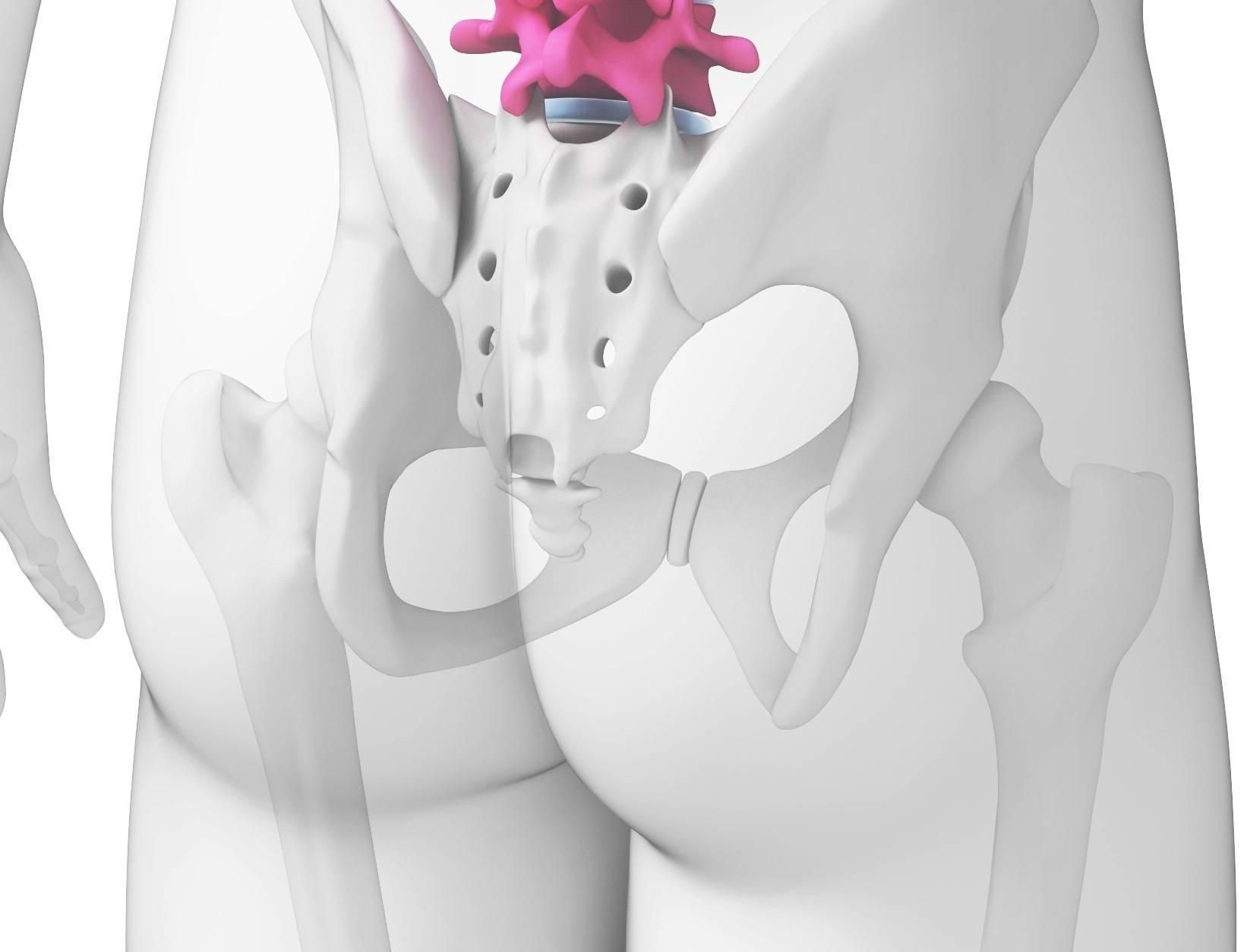Sciatica
What is Sciatica?
Sciatica is inflammation of the sciatic nerve and can be very painful. The inflammation of the sciatic nerve can cause discomfort and pain in the low back, glutes (bottom), down the leg, or in all these areas. Where the pain spreads down the leg, it is more likely for it to be felt in the back of the leg, however, pain down the outside of the front of the leg can also be present. Additionally, where pain is felt in the leg it usually stops at the knee, although in some cases the pain can travel below the knee and affect the whole leg.
Know your types of Sciatica
Even though the pain can be in a number of areas, essentially there are only 2 types of sciatica. The first is Type I (or 'true') sciatica, this is where the nerve is 'entrapped', or inflamed where the nerve exits the lower spine at the junction with the sacrum. This junction is known as L5/S1 and represents the space where the 5th lumbar meets the 1st sacral vertebra. See image.

Type II (or pseudo-sciatica) is where the nerve is entrapped, or inflamed in the soft tissues away from the nerve root. This can also be known as 'piriformis syndrome' when the entrapment occurs in the piriformis muscle (in the bottom). However, nerve entrapment can occur anywhere along the length of the nerve and the pain is not just felt at the site where the nerve is pinched.
What to do if you have Sciatica symptoms?
The first thing to know is whether you have type I, or type II sciatica, and it's also possible to have both at the same time, which may require you seeking the advice of an experienced professional musculoskeletal therapist. It is also important to rule out whether your symptoms are caused by a medical condition, such as arthritis, ankylosing spondylitis etc. Therefore, it is always worth talking to your doctor to discuss any such issues. It is not to say that if you have an underlying medical condition seeking an alternative therapy may not be supportive, however, it may change the approach your therapist takes and rule out using certain techniques.
Suitable therapies
There are a number of alternative therapies recommended by the National Institute for Clinical Excellence (NICE); the body that offers best practice guidelines to the NHS. These include;
- Exercise and postural therapies (for example, general exercise to manage low back pain; specific exercises for the lower back; yoga, group-based and individualised exercise programmes and Alexander technique)
- Manual therapies including massage
- Electrotherapy
- Orthotics and appliances
- Acupuncture
Self-management techniques
Self management is an important part of recovering from sciatic pain, as well as preventing it from re-occurring. However, it is important to know the stretches and/or exercises that will be beneficial to you as an individual, as some may not be. You should always ask your doctor/therapist for exercise advice before attempting any self management.
